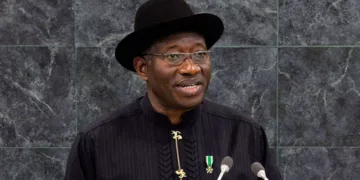Nigeria is working with other petrostates and oil-producing countries to explore initiatives towards reversing consistent crash in oil prices which is threatening economies of oil dependent economies.
The April market rout, which crashed oil prices into the low $60s per barrel, is creating additional fiscal challenges to petrostates and oil-producing countries heavily dependent on oil revenues, on top of any tariff-related hardships.
As Brent Crude prices sank to $63 per barrel, major producers in the Gulf region, as well as Nigeria and Brazil, are looking to contain the fallout from the price plunge. Russia’s central bank has already signaled that the oil price decline could hit its economy hard.
Nigeria’s 2025 budget, which was approved at N54.35 trillion, relies heavily on oil revenue, with projections indicating that oil will contribute 56 per cent of government income.
The budget targets a crude oil production of 2.06 million barrels per day, including condensate, and pegs the oil price at $75 per barrel for the year. However, concerns have been raised about the budget’s feasibility due to challenges like pipeline vandalism and declining investments, which could impact the projected production levels.
Additionally, the global crude oil price has recently fallen below the $75 benchmark, further raising concerns about the budget’s implementation.
The 2025 budget is a substantial N54.35 trillion, with oil revenues projected to be a significant portion of government income.
The budget aims for a production level of 2.06 million barrels per day of crude oil and condensate. The budget is based on a benchmark oil price of $75 per barrel. Significant challenges, including pipeline vandalism, oil theft, and declining investment, threaten the feasibility of reaching the 2.06 million barrels per day production target.
Also, a decline in the global oil price to below the $75 benchmark raises concerns about the budget’s revenue projections and overall implementation.
In summary, Nigeria’s 2025 budget is heavily reliant on oil revenues, but challenges to oil production and a decline in global oil prices raise concerns about the budget’s feasibility and potential impact on various government programs and projects.
Oil at $60 is about $20 to $30 per barrel lower than what many major oil exporters in the Gulf need to balance their budgets.
For Saudi Arabia, the world’s top crude oil exporter, its budget breakeven price is $91 per barrel, as estimated by the International Monetary Fund (IMF). With prices much lower than the breakeven price, Saudi Arabia may have to accelerate government borrowing and slow or delay spending on its ambitious futuristic megalomaniac projects.
Another major Gulf oil producer, Kuwait, last month approved a financing and liquidity law that will allow OPEC’s fourth-largest producer to return to the debt market after eight years.
Kuwait’s economy remains in recession due to OPEC+ production cuts, the International Monetary Fund (IMF) said in December 2024, adding that the economy is “highly exposed” to commodity price volatility and a global growth slowdown.
“The oil price drop we’ve seen over the last week has taken us into territory where for a lot of oil-dependent economies, it’s not going to be what they need to balance their budgets, nowhere close,” Richard Bronze, head of geopolitics at Energy Aspects, told Reuters.
For Russia, the oil market meltdown in recent days could pose risk to the economy Russia’s Central Bank Governor Elvira Nabiullina said earlier this week.
“If the escalation of the tariff wars continues, this usually leads to a decline in global trade and the global economy and, possibly, demand for our energy resources. Therefore, there are risks here,” Nabiullina was quoted as saying by Russia’s TASS news Agency.





